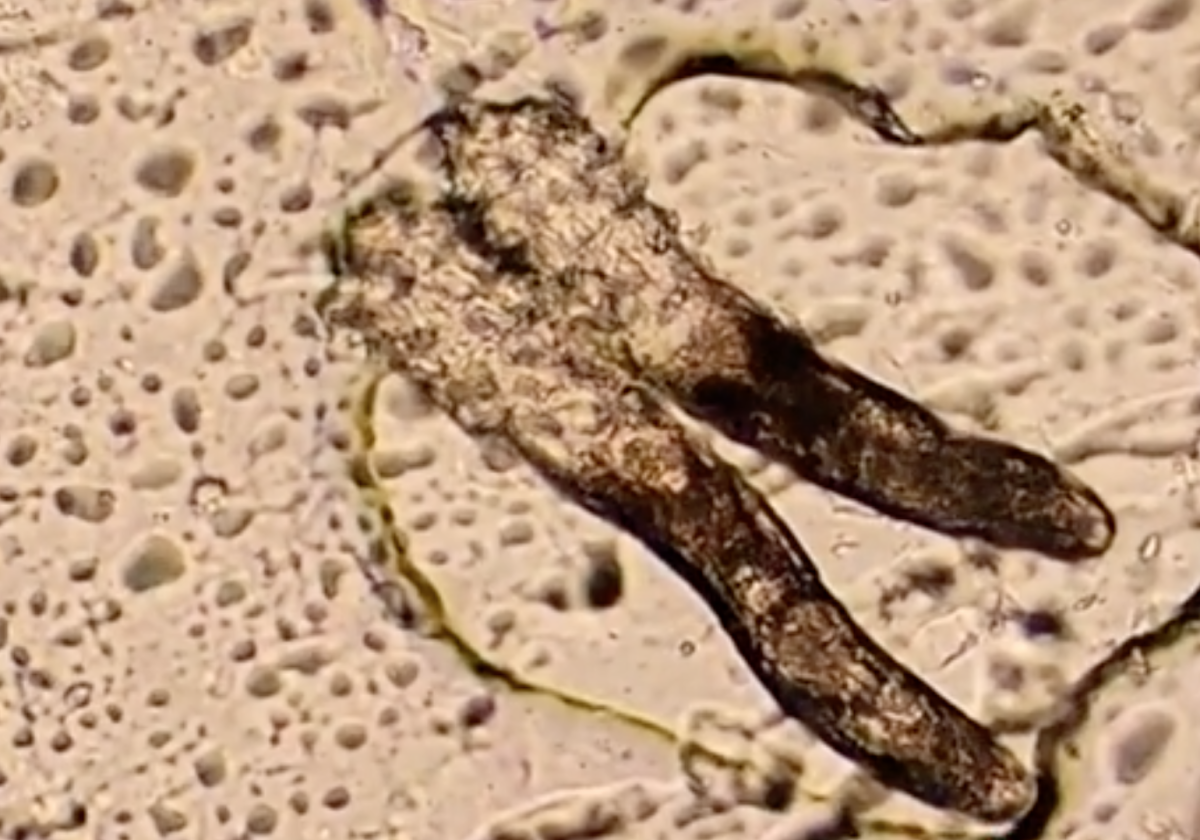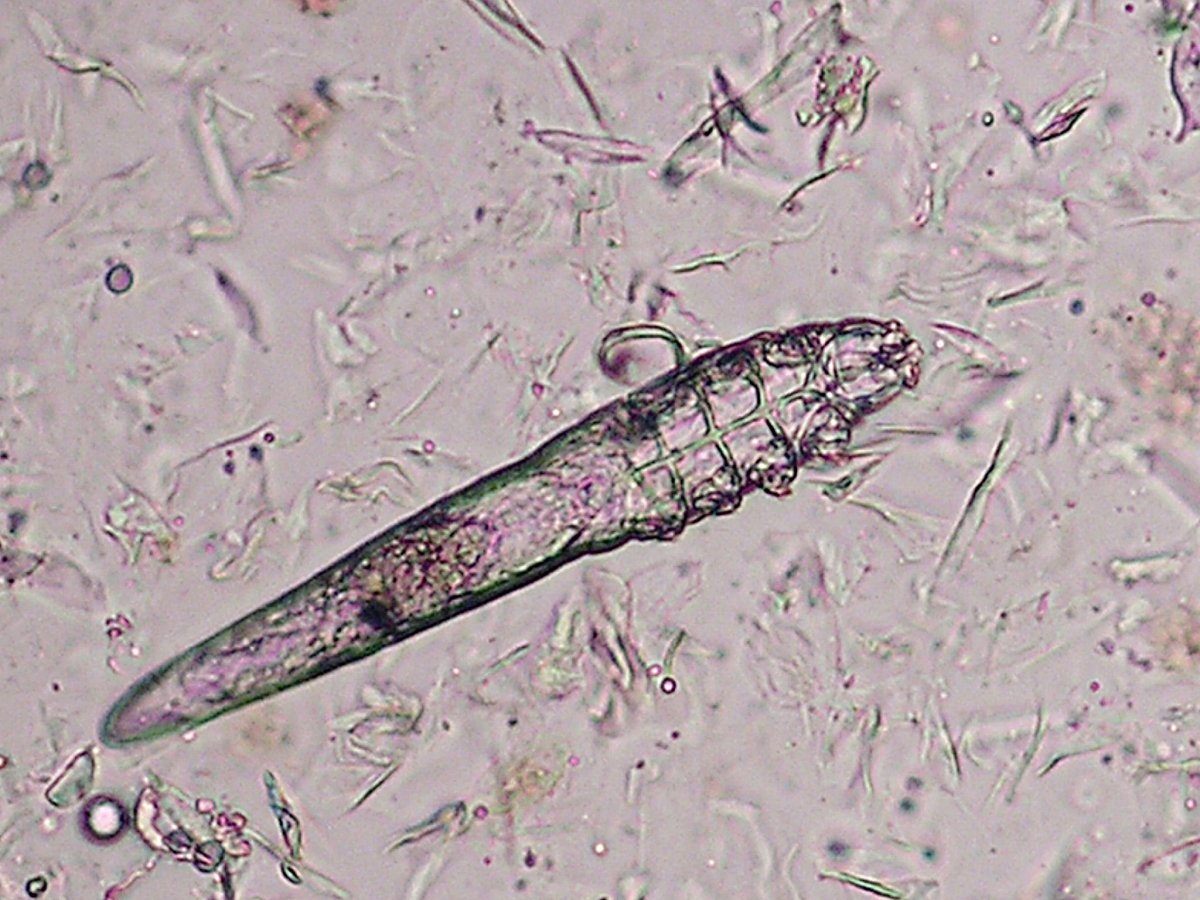A dermatologist has shocked the internet by revealing the tiny bugs living full-time on our faces.
Dr. Scott Walter, who goes by @denverskindoc on TikTok, revealed the invisible arachnids living on his and many of our faces, even showing a microscopic view of one of the mites from his own face.
"This 8-legged creature is living inside the pores of your face right now," he said in one TikTok, which amassed over 880,000 likes. "This is what's called the Demodex mite, and it's actually distantly related to ticks and spiders, because it has 8 legs."
"It likes to live in our pores of the face, and eat off our sebum or the oil that we produce," he said. "Now some people have more than others, and that's what's thought to contribute to the pathogenesis of rosacea, and sometimes it affects the eyelashes."

In another TikTok, Walter catches one of these mites from his own face using sticking tape and shows how it looks underneath a microscope.
"I was not fully prepared for what I found," Walter warns in the video, which also gained several hundred thousand likes. "Do you see that? It's waving its legs at me!" he said as he watched a mite from his skin under the microscope.
"It's still alive! I was not expected that. Isn't he cute?"
Walter also found two other mites entwined, which he dubbed "Jim and Pam".

These Demodex mites are tiny parasites and come in two human-residing species: Demodex folliculorum and Demodex brevis. D. brevis eat the sebum oil on our faces, while D. folliculorum usually lives in smaller hair follicles like the eyelashes, eating skin cells. Most of the 60 or so other Demodex species reside on other mammals, such as Demodex canis, which lives on dogs.
"The mites are about 0.3 to 0.4 mm so it would take about 5 of them to fit on a pin head," Walter told Newsweek.
While they may seem horrifying, there is a high chance that you also have them. As Stephen Martin, an insect researcher at the University of Salford in the U.K., previously told Newsweek: "They are spread by direct contact and probably by dust-containing eggs but can also be passed from mother to baby and are cosmopolitan in terms of their distribution. Infestation with Demodex is common; prevalence in healthy adults varies between 23-100 percent."
@denverskindoc Replying to @kaaat0709 Even I was not fully prepared for this: Demodex Mites: can I catch them all?! #demodex #demodexmite #rosacea #nerdingout #dermatologist #microbiology ♬ original sound - Dr. Scott Walter MD | Derm
According to Walter, these mites prefer areas of excess oil, so usually the T-zone of the forehead and nose, and hair-bearing areas like the eyelashes and eyebrows.
"They can be found in other hair-bearing areas as well but less common compared to the face," he said.
Luckily for us, these mites aren't dangerous, and are actually somewhat helpful.
"They're never truly dangerous to the average person," Walter said. "In fact they're beneficial as they help remove excess oil and dead skin cells. In patients who have suppressed immune systems sometimes they multiply out of control and cause a severe folliculitis called demodicosis (acne-like eruption)."

Occasionally, the mites may contribute to some skin conditions, however.
"Some conditions allow for overgrowth of the mite that may cause characteristic inflammation (Roscaea of the skin is linked to Demodex, in part)", Katherine M. Mastrota, an optometry specialist and director of optometry at the New York Hotel Trades Council, previously told Newsweek. "Blepharitis, that is inflammation of the eyelid, can be due to Demodex overgrowth. Blepharitis can precipitate a host of patient symptoms including eyelash loss."
These conditions occur in rare cases, however, so for the majority of people, Demodex are harmless hitchhikers, and are here to stay, regardless of how itchy the thought of them might make you.
"The best way to cope is to know that they're beneficial to the average person and feeling them "crawl" isn't possible," Walter said. "They're part of our microbiome just like the bacteria and fungus that live on our skin which we are finding to be more and more beneficial to our health."
Is there a health issue that's worrying you? Do you have a question about human parasites? Let us know via health@newsweek.com. We can ask experts for advice, and your story could be featured on Newsweek.
Uncommon Knowledge
Newsweek is committed to challenging conventional wisdom and finding connections in the search for common ground.
Newsweek is committed to challenging conventional wisdom and finding connections in the search for common ground.
About the writer
Jess Thomson is a Newsweek Science Reporter based in London UK. Her focus is reporting on science, technology and healthcare. ... Read more
To read how Newsweek uses AI as a newsroom tool, Click here.








